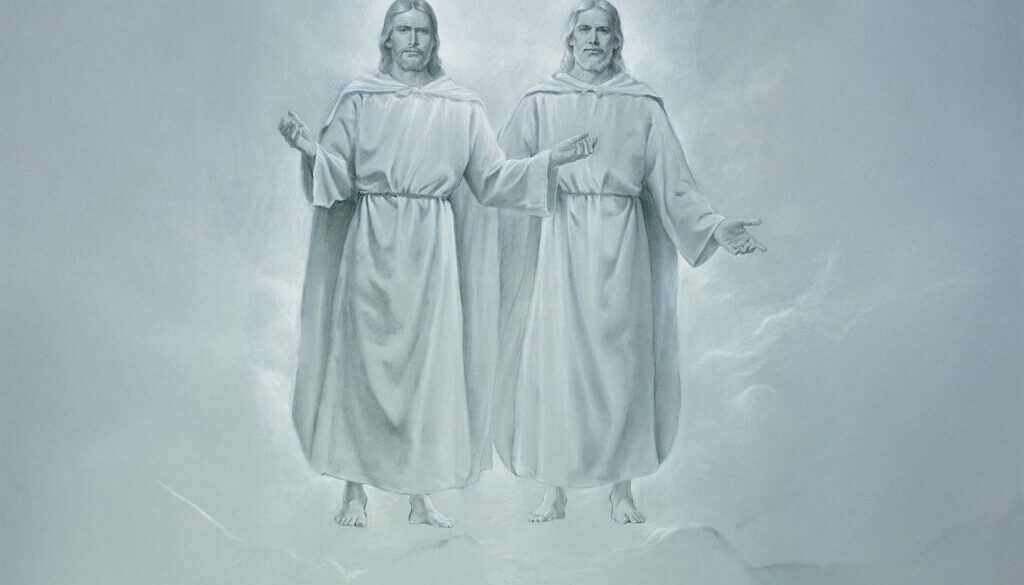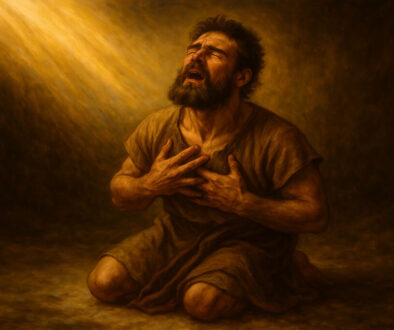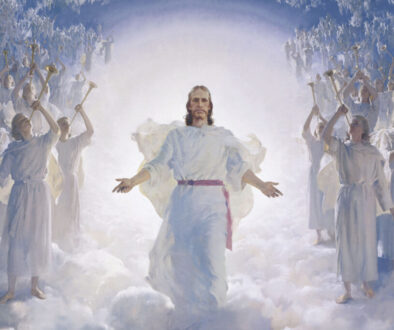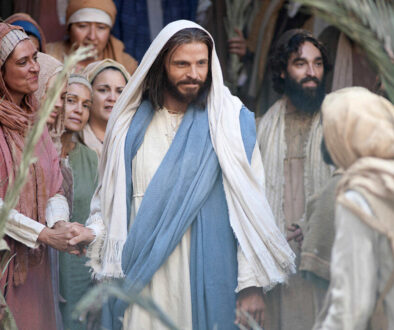How Does the Godhead Work? The Truth Restored
Controversy surrounding the nature of the Godhead has existed for as long as I can remember. Interestingly, it was a topic of discussion during my stepdad’s lifetime. (Family joke: He would tell us kids about “his buddy Ramsey II,” a story I now continue with you!). Clearly, this question isn’t new; debates about the Godhead have persisted since at least the late second century A.D. At the heart of the matter is a fundamental theological question: Is God a single person or are there three distinct beings?
The First Article of Faith
The foundational beliefs of The Church of Jesus Christ of Latter-day Saints are outlined in the Articles of Faith. The first Article of Faith states:
“We believe in God, the Eternal Father, and in His Son, Jesus Christ, and in the Holy Ghost.”
This simple but profound declaration reflects a belief in three distinct members of the Godhead: God the Father, Jesus Christ, and the Holy Ghost.
The Church’s Understanding of the Godhead
The Church of Jesus Christ of Latter-day Saints’ understanding of the Godhead shares certain similarities with other Christian traditions but diverges in profound ways. Most notably, many mainstream Christian denominations subscribe to the doctrine of the Trinity, a belief formally articulated in the Nicene Creed of 325 A.D. This creed teaches that God the Father, Jesus Christ the Son, and the Holy Spirit are three distinct persons who are nevertheless one essence, coequal, coeternal, and indivisible. Do you understand how it works by that definition? I have a hard time myself. In other words, the Trinity teaches that God the Father, Jesus Christ, and the Holy Ghost are somehow three different individuals, but still just one God, not three gods. They are all equal, all eternal, and can’t be separated from one another. If that sounds confusing, you’re not alone—many people, including me, find it hard to understand how something can be both three and one at the same time.
In contrast, the Church of Jesus Christ of Latter-day Saints teaches that the Father, the Son, and the Holy Ghost are three separate and distinct beings. Though they are united in will, purpose, love, and doctrine, they are not one substance or person. This distinction is not a minor doctrine nuance, it is foundational to Latter-day Saint theology and worship.
Latter-day Saints offer their prayers to God the Eternal Father in the name of His Son, Jesus Christ. God the Father is the supreme being whom we worship. Jesus Christ is His Only Begotten Son and our Savior, Redeemer, and Advocate. The Holy Ghost is a distinct member of the Godhead, whose role is to testify of the Father and the Son, provide spiritual guidance, and comfort the faithful.
While all three members of the Godhead are divine and perfectly united, their individual natures differ. God the Father and Jesus Christ are glorified, resurrected beings with tangible bodies of flesh and bone. The Holy Ghost, by contrast, is a personage of spirit, allowing Him to dwell within us and communicate truth directly to our hearts and minds.
The Restoration of the True Doctrine of the Godhead
Latter-day Saints believe that the original understanding of the Godhead as taught personally by Jesus Christ and reinforced by His Apostles during the New Testament era was gradually lost in the centuries following their deaths. This period, known as the Great Apostasy, was marked by widespread spiritual decline, the loss of priesthood authority, and the introduction of man-made philosophies and creeds into Christian doctrine. Over time, plain and precious truths were distorted or forgotten, including the distinct nature and identity of the members of the Godhead.

This divine truth began to be restored in 1820 through a humble, heartfelt prayer offered by a 14-year-old boy named Joseph Smith. Confused by the competing claims of various churches and longing to know which one was true, Joseph turned to the Bible and read James 1:5: “If any of you lack wisdom, let him ask of God.” Acting in faith, he went into a grove of trees near his home in Palmyra, New York, and prayed.
In answer to that prayer, Joseph experienced what is now known as the First Vision. In a miraculous moment of divine revelation, God the Eternal Father and His Son, Jesus Christ, appeared to him. They stood before Joseph as two separate, glorified beings, filled with light and majesty. This event not only opened the last dispensation the Restoration of the gospel in its fullness, but also immediately corrected centuries of misunderstanding about the nature of God. Joseph saw with his own eyes that the Father and the Son were real, distinct individuals, not abstract beings or a single incomprehensible essence.
Later revelations through Joseph Smith clarified and confirmed this truth. He taught that “The Father has a body of flesh and bones as tangible as man’s; the Son also; but the Holy Ghost… is a personage of Spirit” (Doctrine and Covenants 130:22). This restored understanding reveals a God who is not distant or unknowable, but a loving Heavenly Father—personal, real, and relatable—who hears and answers the prayers of His children.
Elder Jeffrey R. Holland of the Quorum of the Twelve Apostles gave a wonderful talk at our General Conference covering this very subject.
Image Credit: The Church of Jesus Christ of Latter-day Saints




